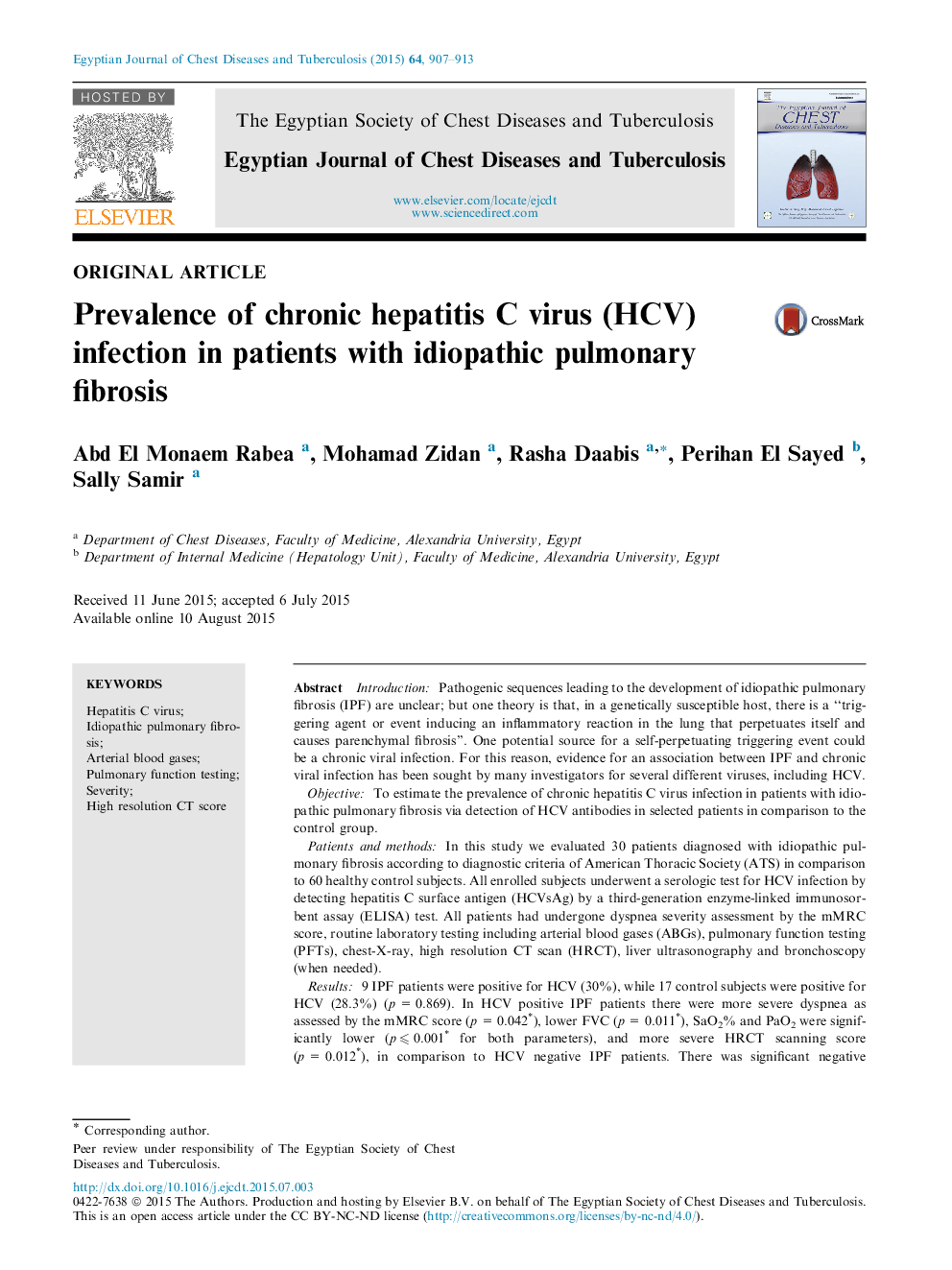| Article ID | Journal | Published Year | Pages | File Type |
|---|---|---|---|---|
| 3399959 | Egyptian Journal of Chest Diseases and Tuberculosis | 2015 | 7 Pages |
IntroductionPathogenic sequences leading to the development of idiopathic pulmonary fibrosis (IPF) are unclear; but one theory is that, in a genetically susceptible host, there is a “triggering agent or event inducing an inflammatory reaction in the lung that perpetuates itself and causes parenchymal fibrosis”. One potential source for a self-perpetuating triggering event could be a chronic viral infection. For this reason, evidence for an association between IPF and chronic viral infection has been sought by many investigators for several different viruses, including HCV.ObjectiveTo estimate the prevalence of chronic hepatitis C virus infection in patients with idiopathic pulmonary fibrosis via detection of HCV antibodies in selected patients in comparison to the control group.Patients and methodsIn this study we evaluated 30 patients diagnosed with idiopathic pulmonary fibrosis according to diagnostic criteria of American Thoracic Society (ATS) in comparison to 60 healthy control subjects. All enrolled subjects underwent a serologic test for HCV infection by detecting hepatitis C surface antigen (HCVsAg) by a third-generation enzyme-linked immunosorbent assay (ELISA) test. All patients had undergone dyspnea severity assessment by the mMRC score, routine laboratory testing including arterial blood gases (ABGs), pulmonary function testing (PFTs), chest-X-ray, high resolution CT scan (HRCT), liver ultrasonography and bronchoscopy (when needed).Results9 IPF patients were positive for HCV (30%), while 17 control subjects were positive for HCV (28.3%) (p = 0.869). In HCV positive IPF patients there were more severe dyspnea as assessed by the mMRC score (p = 0.042∗), lower FVC (p = 0.011∗), SaO2% and PaO2 were significantly lower (p ⩽ 0.001∗ for both parameters), and more severe HRCT scanning score (p = 0.012∗), in comparison to HCV negative IPF patients. There was significant negative correlation between the HRCT score and FVC (p = 0.011∗) in HCV positive IPF patients, there was significant negative correlation between liver cirrhosis and PaO2 (p = 0.023∗), PaCO2 (p = 0.002∗) in HCV positive IPF patients.ConclusionDespite the fact that we couldn’t confirm the hypothesis that HCV can be a causative agent in the development of IPF, however, we have shown that HCV can be a predisposing factor for the development of a more severe form of IPF. Therefore screening IPF patients for the presence of underlying HCV infection can have important therapeutic and prognostic implications in those patients.
